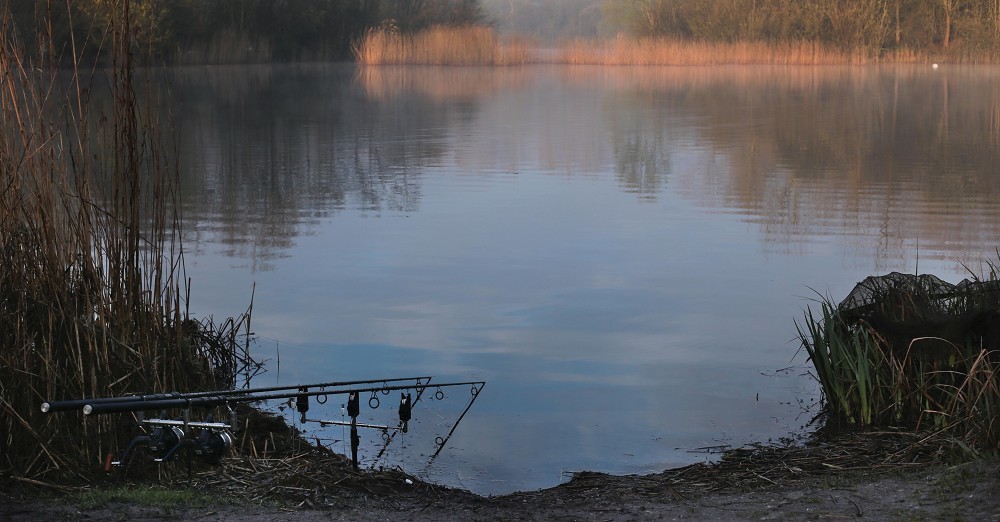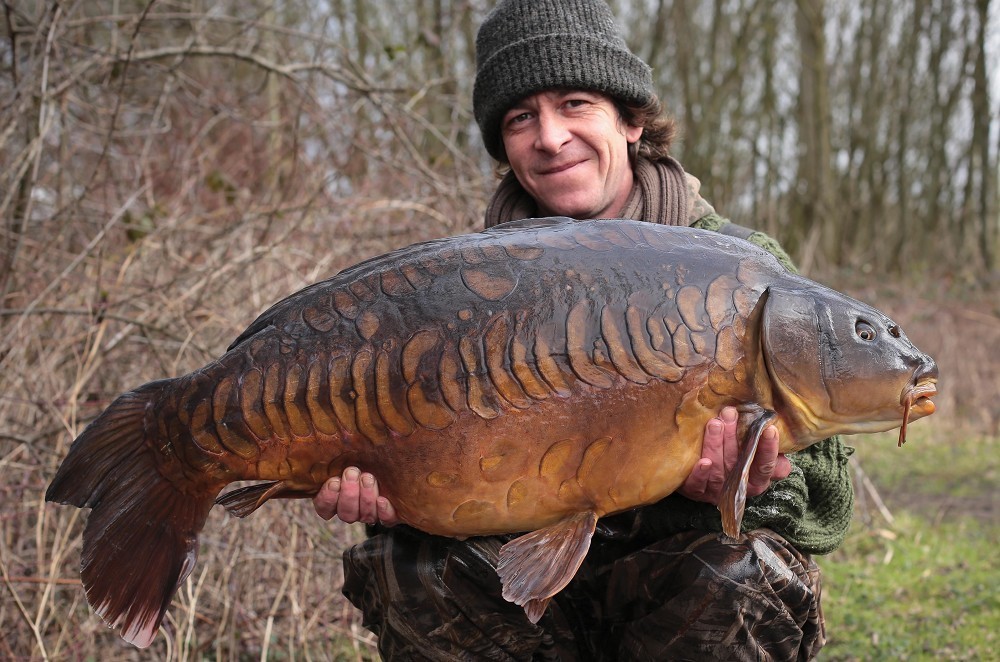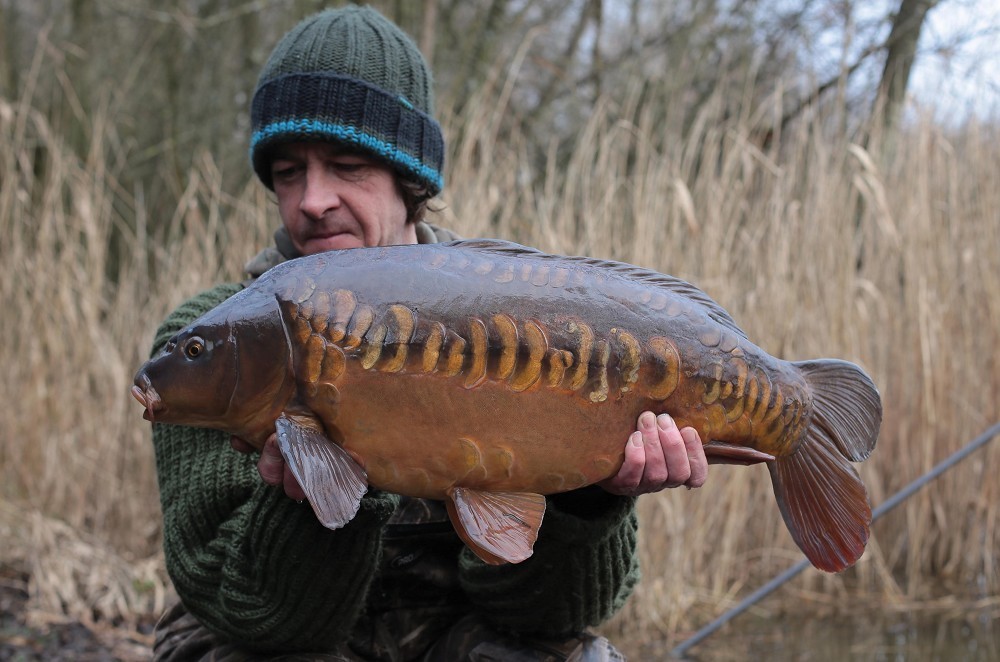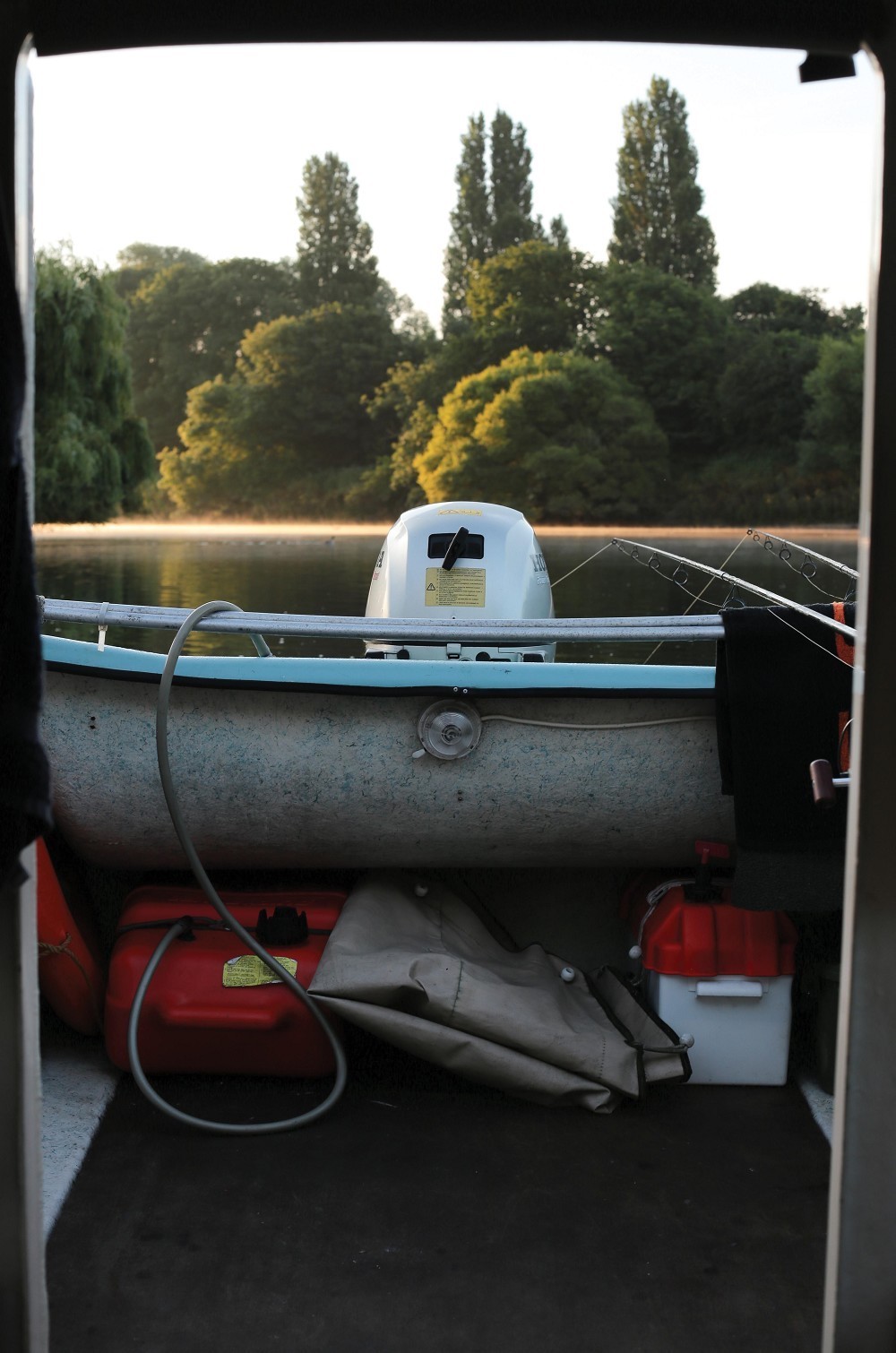
Do you always need bobbins?
Terry Hearn discusses bite indication and logic...
Question
Am I missing something by thinking the purpose of a bobbin is to react to line movement? Of course it’s nice to have good-looking kit but some of the things I see make me shake my head. Slack lines and bobbins which have a clip that grips the line and are then fished with the line tight to the reel (or line clip) rather than the water? Drop backs will not register at all and a carp will have to swim quite some way before giving any indication. It’s great marketing that has sold this type of kit but it is not functional in any situation other than very close in.
Think of the last time you saw a feeder angler fishing with the line hanging limp from his rod tip waiting for a fish to swim yards before his rod bends round. Never is the answer to that because it makes no sense, so why do we do it and if you think every carp that picks up your hookbait bolts off then you are sorely mistaken.
Screaming runs are great but all I need to be up on the rod is a single bleep. I’ll watch the line where it enters the water and if there is any unnatural movement I’ll strike the rod. I’d say roughly two times out of every five I do this there is a carp on the end. Try it, they are not all liners!
I’m also not keen on the modern thinking that our lines need to sink like a brick to not spook the carp. I’d like to hear Rob’s opinion on this with his diving experience because I want my line nowhere near the lakebed. This stems from a feature finding session I had on a gin clear clay pit with a snorkel and mask a few years back. My eyes were opened to some of the obstacles down there including small twigs that had become encrusted with zebra mussels. That’s a cut-off waiting to happen. There was also a plate rack with a lost rig still attached and tractor wheel down there. What I’m saying is, unless we are in there, we just don’t know what we are putting our line through, especially after a period of high winds and I have not tried to pin my line down since.
I’m currently using an American mono which has a near neutral buoyancy and less stretch than anything on the shelves over here. Before I used it, I tested the abrasion resistance and it matched the old Nash Bullet which I was happy with. I get the bite indication I want with a direct line to the rig or as direct as possible and it’s not sinking into danger. Mark Watson
Another good subject from Mark. Obviously bite registration is important, but being honest it’s not something I worry about too much. We’re using sharp exposed hooks and fixed leads, and so pretty much the only time we get an indication at the rod end, other than liners, is when the lead is moved, i.e., when a fish is already pricked. Some of those takes might start off with a flickering of the line or just a bleep or two, but it rarely means that the fish has only travelled a few inches or it’s sitting there shaking its head. In fact, most of the time it’s more likely to have already travelled yards and it’s well and truly on the end. If we were to leave those single bleeps and flickering lines, then the vast majority of the time the line will tighten up fully and we’ll get a proper indication. If I was fishing running leads with baits directly on the hook then I’d be thinking differently, but with Hair rigs, sharp exposed hooks and fixed leads, for the most part when they’re on the end, they’re on the end.
As Mark indicates in his question, those takes which register as finicky affairs aren’t necessarily struck at because of the amount of bleeps, they’re struck far more because of the movement on either the line or the tip. And it’s more the way it might move, not how much. I’m sure Mark knows what I mean, he obviously knows the difference between a take and a liner. It would be little use advising people just to strike at single bleeps or lifting lines, instead the answer is getting a feel for which line movements are takes and which are liners, and also realising that in most cases there isn’t any urgency, it’s okay to watch as they develop, that’s how we learn to tell the difference.
 Depending on conditions, I often prefer not to use a bobbin at all. A February capture of Wasing’s Floppy Tail, no bobbin needed. Camera dials: Canon EOS 6D, 50mm, f5, 1/160
Depending on conditions, I often prefer not to use a bobbin at all. A February capture of Wasing’s Floppy Tail, no bobbin needed. Camera dials: Canon EOS 6D, 50mm, f5, 1/160How many times have you stood behind an angler who’s perhaps a little fresh to the game and watched them run forward and strike at what to you was clearly a liner? Recognising a take from a liner can be a difficult thing to put into words, something that’s difficult to pass on to someone, but once you know the difference, it’s rare to make a mistake. I try my very best not to strike any liners as it’s just going to have the effect of putting the fish even more on edge, not least because I then need to recast. When I do strike because of movement on my line it’s generally because I’m pretty certain that a fish is hooked, even if the buzzer is yet to bleep, and I don’t feel as though I’d catch anymore if I suddenly started striking at other line movements.
A lot of the time I fish without any bobbins at all. If I think there’s a high chance of a dropback then obviously I’ll have a bobbin on, clipped up with a relatively tight line, say when fishing at range or tight up to a far bank or an island, but if I’m fishing open water or close in then much of the time I see little need for them. Taking underwater obstacles and weed into account, I like to give just enough slack to hopefully get the lines down at the rig end, or at the very least slack enough to make them less spooky to any carp which might happen to bump into them, but I really don’t like giving anymore slack than is necessary, as I like the fish to come up against the full resistance of the rod and clip as early as possible.
I’ve said it before and no doubt I’ll keep on saying it, but carp fishing is all about trade offs. I think that tight lines are the best hookers of all, but sometimes I like to trade some of that tightness in for some slack and a better presentation, but not so much that it’s going to cost me fish. It’s all about getting the balance right.
Like Mark, I’m also surprised at the way a lot of anglers fish their bobbins, but just as often because I’m surprised that they’re using them at all. If you’re fishing close in with a slackish line then a lot of the time they aren’t needed. What’s the point in putting a bobbin on and then laying it on the floor? In the event of a take it can only do one thing: go up, and in that instance it’s surely better if the fish has already hit the clip and the tip is already starting to bend round in the same time frame, to the same amount of line movement.
Obviously there are times when I might want to register liners just to see what’s going on in the swim, especially in winter when sightings are less frequent, but a lot of the time I’d rather do away with all the false bleeps, as well as that extra, unnecessary bit of slack that a bobbin on the floor, or even on a long drop, creates. I’ve already set the line from the rod tip to the rig at what to me might be the ideal slackness or tension on the day. I prefer that slackness to stop at the rod tip, the other possible bit of slack between the buzzer and the reel, the bit with a bobbin clipped on with a drop, isn’t always needed and it’s very rarely wanted.
Other than the extreme-range stuff I rarely used a bobbin at Wasing all winter long. One of the swims I did a lot of time in fished best in windy, choppy conditions, right in the teeth of it, and so in that situation I was either going to fish tight lines with bobbins clipped at the top, or semi-slack with no bobbins on at all, that or be kept up all night with false bleeps. Seeing as it was fairly deep between the swim and the spots, rather than stretching three dead tight lines through the water, I preferred to use no bobbins at all and to pay off a little slack on each.
Another alternative in similar choppy conditions is a second line clip in front of the buzzer and bobbin, but again, just like a bobbin on the deck, what’s the point? If conditions were calm enough then I’d sometimes put bobbins on, rested in the water so I could still keep the lines at sensible semi-slack tension, but as soon as the good windy conditions rolled in and the bobbins started giving me false bleeps, then off they came.
I like fishing with no bobbins, and in that particular swim at Wasing just one or two bleeps was often enough to tell me that a fish was hooked. I’d walk up to the rod, or wade as was more often the case as the swim was regularly flooded and I’d have to bivvy up several yards back from the edge. I’d then shine the torch on the buzzers and watch the roller on whichever buzzer had bleeped, and at the same time I’d be reaching for the line between the clip and the buzzer to see if the tension was still as it should be. The tips were generally sunk to avoid any drifting weed, and so with no tips to look at it was always the Neville roller magnets that my eyes went to first, and many fish came my way after watching the magnet slowly starting to nudge forward, before the line had even pulled from the clip. Single bleeps, yes, but I’ve absolutely no doubt at all that they would have pulled from the clip and trundled off within a few more seconds if I’d not picked up the rod at that moment in time.
A bobbin to me serves two main purposes: to tell me when I’ve got a dropback and to tell me when I’ve got a liner, but they aren’t always necessary. The main exception is if you’re fishing close to snags, when for obvious reasons it’s good to gain that extra split second warning of a take.
This might sound a bit far out, but has anyone ever wondered if carp can sense the buzzers bleeping down the main line, as in when we’re getting liners? I remember Frank Warwick talking about this as a possibility some years ago, and just like Frank I’m not saying it’s a definite, or even that it might spook the carp if they can, but it does get you wondering. I mean, we all know about two plastic cups on a string. Maybe the sound travels down our main lines and through the water more than we think? Maybe it’s not a good thing to keep registering line bites through the buzzer? Maybe it’s not a bad idea doing away with those bobbins unless they’re really needed… I don’t know, maybe something that Rob Hughes would be more clued up about through his diving exploits.
Talking of set-ups, bobbins, and the way people fish their rods, I’m often surprised at how close together some anglers have their banksticks nowadays. Seriously, sometimes I’ve seen the front and back banksticks like barely a foot apart, with all that rod stuck out in front of the buzzers, almost balanced there, like bouncy, floppy tank aerials about to topple over at any moment. What’s that all about? It’s common sense, but if you want good hooking then having a rigid set-up also makes a difference. Separate those banksticks a bit for gawd sake.
One place where I can’t be at all fussy about bite indication is on my boat on the River Thames. There it would be impossible to use bobbins, in fact when I’m at anchor I’m often bobbing and swinging about due to other passing boats… and the wind, and the flow, and the rising and falling tides, so much so that I have to keep jumping up to pay off a bit more slack. I tend to use fairly light backleads and so if I’m caught off guard they lift well before the end tackle is dragged out of place. Basically one minute both tips could be slightly bent and the next the boat might have swung on its ropes and each of my main lines has developed a couple of metres of slack in it. In this case it’s not just bobbins I can do without, it’s buzzers too. In effect I’m pretty much quiver tipping for carp. Some takes are slower to develop due to the backleads and the necessary extra slack in the line, and I can think of many times where a sudden pluck hasn’t fully registered as a full blooded, tip over, clutch purring type of a take until several seconds later, but by then my hand is already hovering over the rod as I recognised the earlier pluck as a very high likelihood of there being one on the end. I still wait until I’m sure before picking up the rod though, and I never panic or imagine that a fish is sat on the spot trying to shake the rig. I tell you one thing, if you happen to be a little OCD about bite indication then a trip or two big river boat carping is sure to cure it!
I get what Mark is saying on the line thing too, and I completely agree with the bit about all the rubbish and snags on the bottom, which is one reason I rarely use backleads. The Thames is just about the only place I ever use backleads as it goes, and that’s only because I’m forced to because of passing boats. There’s not a lot I can do about it, but if there’s one thing that’s cost me fish it’s that. The bottom of my stretch of river is pretty rough and rocky in places, with the occasional supermarket trolley thrown in for good measure, and so I have to be careful about where I drop those backleads. It’s also a good idea to use ones which the clip can pull free from. I once remember my mate Dave giving fluorocarbon main line a try off the boat, the idea being that it would sink better, thus avoiding the boat traffic even further, but after just one trip and much lost tackle he was soon going back to a normal main line. That’s me out of space, until next time, keep catching ‘em.






